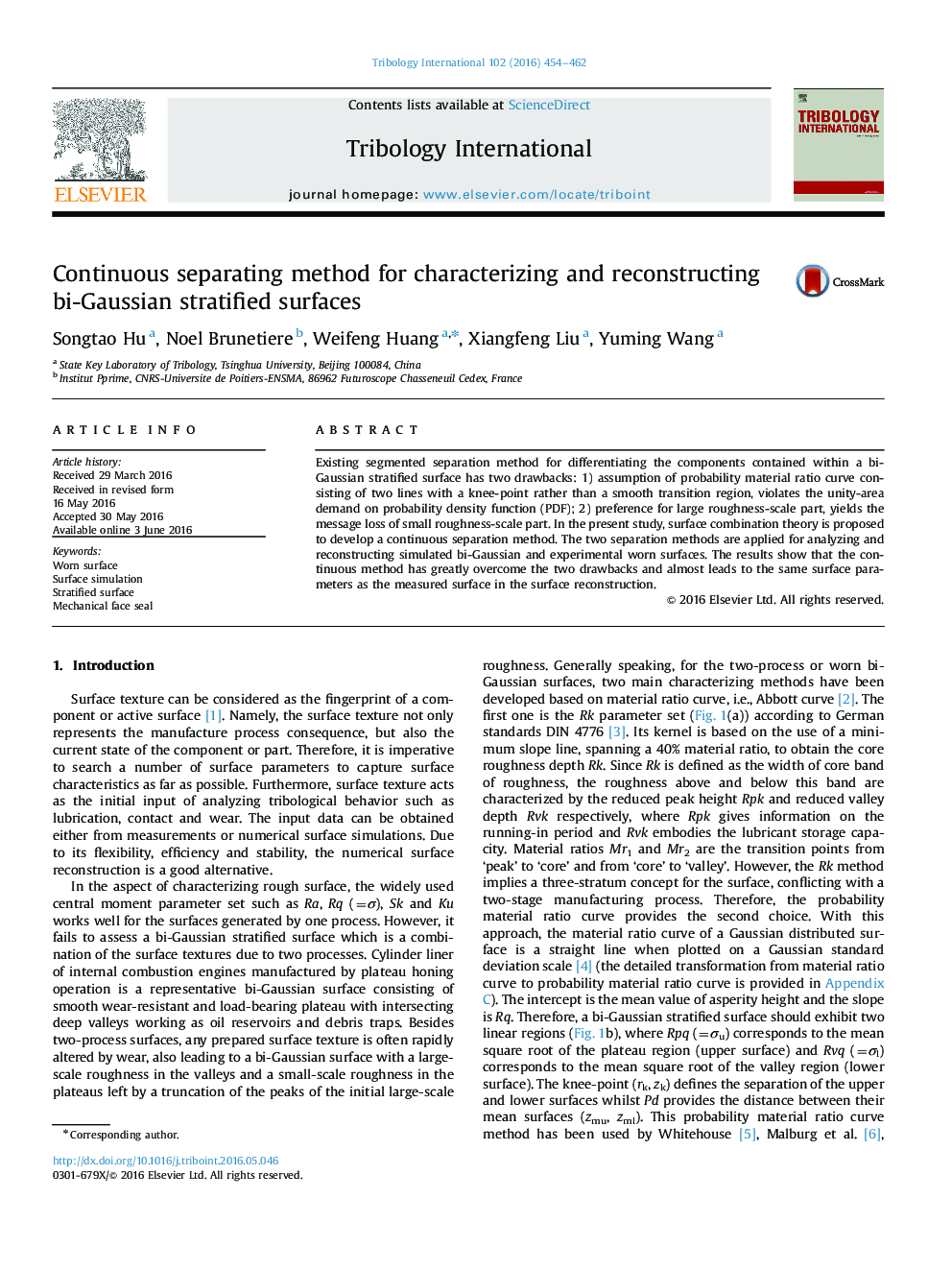| Article ID | Journal | Published Year | Pages | File Type |
|---|---|---|---|---|
| 614129 | Tribology International | 2016 | 9 Pages |
Abstract
Existing segmented separation method for differentiating the components contained within a bi-Gaussian stratified surface has two drawbacks: 1) assumption of probability material ratio curve consisting of two lines with a knee-point rather than a smooth transition region, violates the unity-area demand on probability density function (PDF); 2) preference for large roughness-scale part, yields the message loss of small roughness-scale part. In the present study, surface combination theory is proposed to develop a continuous separation method. The two separation methods are applied for analyzing and reconstructing simulated bi-Gaussian and experimental worn surfaces. The results show that the continuous method has greatly overcome the two drawbacks and almost leads to the same surface parameters as the measured surface in the surface reconstruction.
Related Topics
Physical Sciences and Engineering
Chemical Engineering
Colloid and Surface Chemistry
Authors
Songtao Hu, Noel Brunetiere, Weifeng Huang, Xiangfeng Liu, Yuming Wang,
